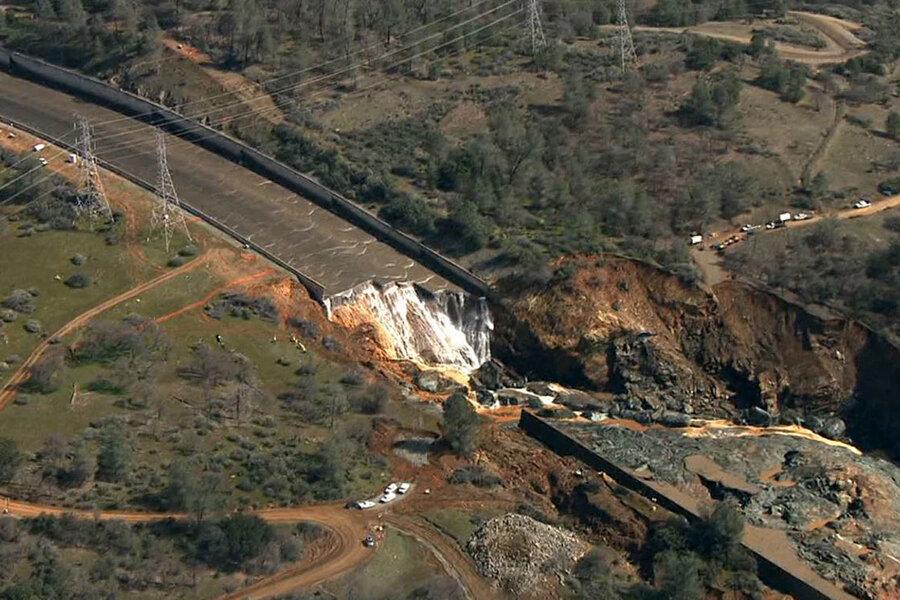Workers begin clearing Oroville spillway debris as officials plan for the future
Loading...
Workers in California began removing debris from a damaged emergency spillway at the Oroville Dam on Monday, in the first step toward resolving an emergency that led officials to evacuate some 200,000 residents from areas downstream on Feb. 12.
Water authorities closed off the release of water from the spillway on Monday. They expect that workers can clear between 500,000 and 1 million cubic yards of debris over the next five to seven days, Department of Water Resources spokeswoman Lauren Bisnett told the Associated Press.
Clearing the debris should help return the Hyatt Power Plant, which manages water levels in the dam’s reservoir, to operation in time for spring runoff, Butte County Sheriff Kenneth Honea said.
"We're in it for the long haul and I've asked the public to be aware of that and be patient as we go forward," Mr. Honea told the AP.
Even as officials cautioned that the emergency had not yet been fully resolved, others were already looking ahead, calling for ways to forestall similar failures in infrastructure around California’s water resources.
On Friday, California Gov. Jerry Brown said he would ask the state legislature to approve $437 million in spending for flood control and emergency response and preparedness, including $387 million from a $7.5 billion water bond passed by voters in 2014, according to Reuters. Mr. Brown also said he would ask the federal government for additional funding and regulatory assistance in a letter sent to President Trump that same day.
And some scientists argue that the emergency should shine a light on how water authorities can prepare for climate-related crises of infrastructure, as The Christian Science Monitor’s Zack Colman reports:
"I think we can certainly say that under a warmer climate, more of California's winter precipitation will arrive as rain, rather than snow, so that these kinds of concerns about reservoir capacity will become increasingly urgent," Sally Thompson, an assistant professor of civil and environmental engineering at the University of California-Berkeley, says in an email.
To her it looks “premature” to draw a direct line from climate change to Oroville’s busting-at-the-seams reservoir. But she and others say it’s not an irrelevant line of inquiry.
...
“What we're looking at is the challenge - and it's a very real and scary challenge - of managing and maintaining aging infrastructure,” Thompson says. Some policy analysts hope that the Trump administration will include funding for aging dams in a planned infrastructure spending bill. Details of that plan have yet to emerge.
But Thompson adds that structural problems at dams have arisen elsewhere when heavy rains follow a period of prolonged drought, which some scientists contend is a fingerprint of climate change.
Environmental groups had questioned the suitablity of a second, supplementary spillway in 2005, when they asked federal regulators to require California to build a sturdier structure. But this month was the first time it had been tested.
The Department of Water Resources says the inflow of water into the Oroville Dam this month was 570 percent of the average for February. Water levels in the reservoir reached capacity at 901 feet earlier in the month, although those have fallen nearly 60 feet since then.
This report contains material from the Associated Press and Reuters.
[Editor's note: An earlier version of this article incorrectly suggested that the spillway being cleared was the same spillway that raised concerns in 2005.]








